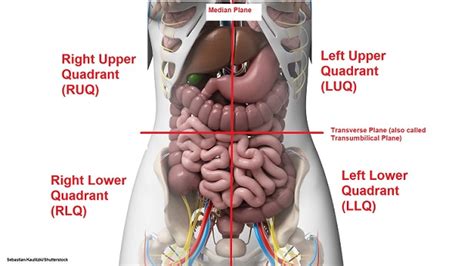Where would you want to get shot? Like, if you had no choice, and I said, “I am going to shoot you, but…. You can name any part of your body and that is where I will place the bullet.”
What would you say?
What part would you opt in for?
For me, it would be the trapezoid, because I once saw an old guerilla fighter (this guy must’ve been like 70 years old fighting ISIS in Syria), take a 7.62 round right through and thru his upper right trap… It didn’t even bleed, and he sat down and lit up a cigarette as if though he was experiencing an episode of arthritis, lol…
But enough imagining… Let’s talk about something real. The Lower Left Quadrant (LLQ) of the human abdomen.
How bad is a gunshot wound to this part of your body? How could this wound affect your enemy?
It turns out.. in my opinion, its really “not that bad” of a spot to get shot in…
Let’s dive down into some data.
Vital Organs in the Lower Left Quadrant
The lower left quadrant (LLQ) contains several key structures:
- Descending Colon and Sigmoid Colon: Parts of the large intestine.
- Small Intestine: Sections of it traverse this area.
- Left Ovary and Fallopian Tube: In females.
- Left Ureter: A component of the urinary system.
- Blood Vessels and Nerves: Supplying the lower abdomen and pelvis.
Unlike the upper quadrants, which house the liver, spleen, stomach, pancreas, and major blood vessels, the LLQ lacks organs that are immediately life-threatening if injured.
Potential Medical Injuries and Illnesses
A gunshot wound to the LLQ can cause various injuries and illnesses, each requiring prompt medical attention:
- Intestinal Perforation:
- Perforation of the small intestine or colon can lead to peritonitis (infection of the abdominal cavity) and sepsis.
- Vascular Injury:
- Damage to blood vessels may cause severe internal bleeding and hemorrhagic shock.
- Ureteral Injury:
- Injury to the left ureter can lead to urine leakage into the abdominal cavity, resulting in infection and potential kidney damage.
- Genitourinary Injury:
- In females, injury to the ovary or fallopian tube can result in significant internal bleeding and possible infertility.
- Pelvic Fractures:
- Gunshot wounds can fracture the pelvic bones, causing severe bleeding and damage to surrounding organs.
- Nerve Damage:
- Injury to nerves in the lower abdomen and pelvis may lead to chronic pain or loss of function in the lower extremities.
- Bladder Injury:
- If the trajectory includes the bladder, it can result in urine leakage and infection.
- Infection:
- The risk of infection from bacteria entering the wound is high, potentially leading to abscess formation or sepsis.
- Compartment Syndrome:
- Increased pressure within muscles can lead to muscle and nerve damage.
- Fistula Formation:
- Abnormal connections can form between the intestine and other organs or the skin.
- Retroperitoneal Hematoma:
- Accumulation of blood in the retroperitoneal space can be challenging to detect and treat.
- Organ Laceration:
- Lacerations to the intestines, urinary organs, or reproductive organs can cause significant bleeding and functional loss.
Why the Lower Left Quadrant Might Be the Best Option
Despite the potential injuries, the LLQ might be considered the “best” option for a gunshot wound due to the following reasons:
- Absence of Major Vital Organs: The LLQ does not house major organs like the liver or spleen, whose damage can be immediately life-threatening.
- Manageable Injuries: Injuries to the intestines or colon, while serious, can often be managed surgically. The risk of fatality is lower compared to injuries in the upper quadrants.
- Less Critical Vascular Structures: While there are significant blood vessels, they are less critical compared to the aorta or major hepatic vessels found in other quadrants.
- Easier Access for Treatment: Surgeons can access and repair injuries in the LLQ more easily compared to deeper, more complex regions of the abdomen.
- Lower Risk of Immediate Fatality: The likelihood of immediate fatality is lower compared to injuries involving the heart, major blood vessels, or upper abdominal organs.
Considering this information, the LLQ might be the best part (of the abdomen) to receive a gunshot wound.
Pretty interesting stuff to know…
How Can This Knowledge Benefit You?
It can be useful to know this information for the following reasons.
Enhanced Situational Awareness
- Tactical Training:
- Incorporating knowledge of abdominal quadrants into tactical training can improve decision-making during live-fire exercises or simulations. Understanding which areas are less critical can help in planning safer engagement strategies.
- Personal Safety:
- In the unfortunate event of being in a gunfight, knowing that the lower left quadrant (LLQ) is less critical can influence how one positions themselves. While it’s not a guarantee of safety, it can be part of a broader strategy to minimize risk.
First Aid and Emergency Response
- Prioritizing Medical Attention:
- Gun enthusiasts who also engage in first aid or emergency response training can prioritize injuries more effectively. Knowing that an LLQ wound is potentially less critical compared to upper quadrant injuries can help in triaging multiple casualties.
- Preparedness:
- Being prepared for different injury scenarios can enhance one’s ability to respond quickly and effectively. Carrying appropriate medical supplies and having a clear understanding of injury management can make a significant difference.
Informed Decision-Making
- Training and Education:
- Gun enthusiasts often participate in various training courses. Incorporating medical knowledge into these courses can provide a well-rounded education. This can be particularly beneficial for those involved in self-defense, law enforcement, or military training.
- Awareness in Concealed Carry:
- For those who carry firearms for self-defense, understanding the implications of gunshot wounds can influence how they carry and use their weapons. It promotes a more responsible and informed approach to handling firearms.
Enhancing Tactical Strategies
- Body Armor Selection:
- Understanding which areas are more vulnerable can influence the choice and use of body armor. While comprehensive protection is ideal, knowing that the LLQ is less critical can help in prioritizing coverage areas.
- Strategic Positioning:
- In scenarios where cover and concealment are necessary, positioning oneself to protect the more critical areas of the body (such as the upper quadrants) can be a strategic advantage.
In the end, its always good to know what the medical affects are of anything penetrating your body… it just is…
But in the end, I just hope you learned something, and that you see why it is useful information.
Take care.
- Joe
PS: If you want more in depth and personal 1-1 training on stuff like this then join Lethal U, and start learning life-saving skills today.

